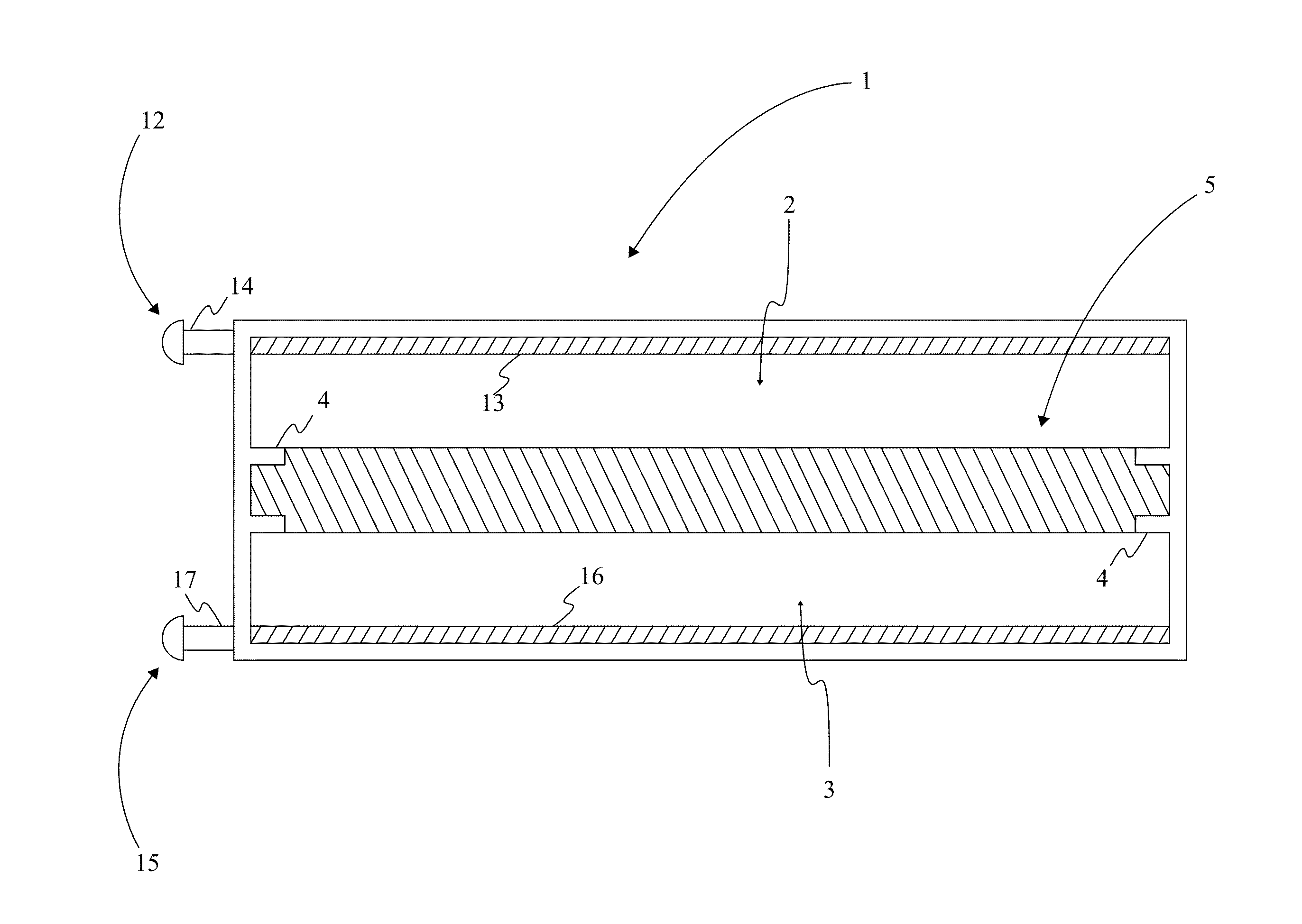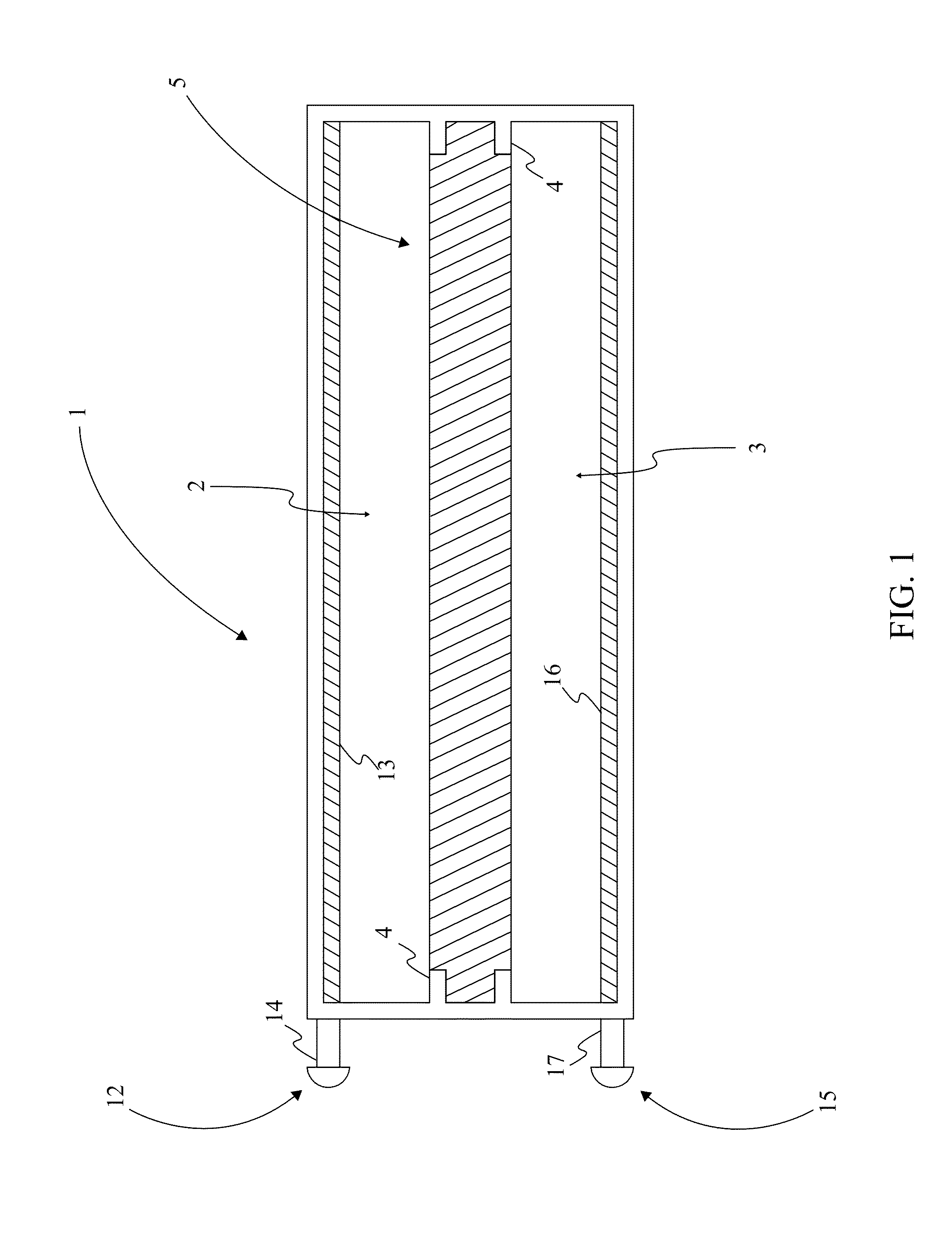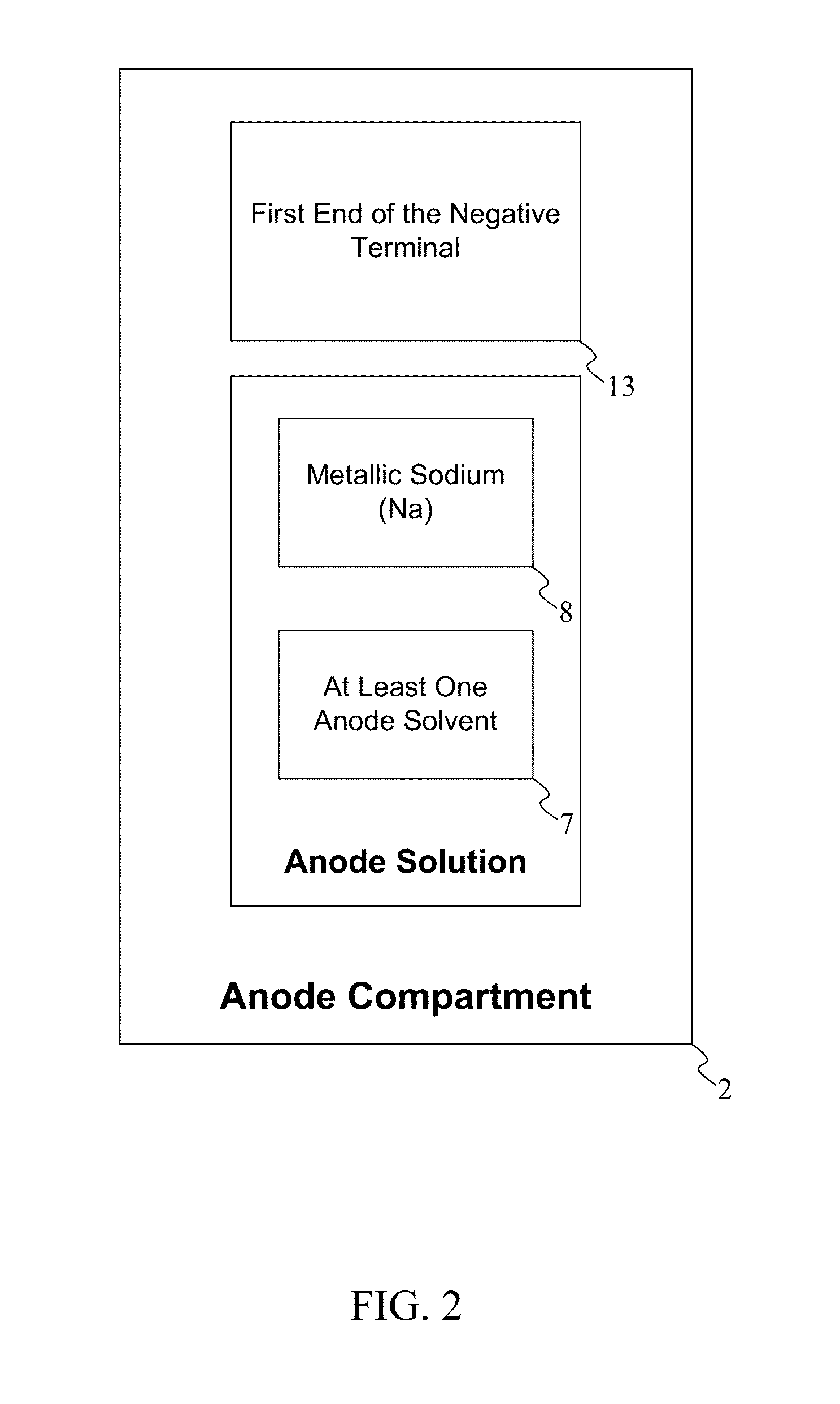Sodium-Sulfur Battery
a secondary battery and sodium sulfur technology, applied in the field of electrochemical batteries, can solve the problems of initial cost of the battery, how long it lasts, electrical efficiency, etc., and achieve the effect of high operating cell potential
- Summary
- Abstract
- Description
- Claims
- Application Information
AI Technical Summary
Benefits of technology
Problems solved by technology
Method used
Image
Examples
Embodiment Construction
[0040]All illustrations of the drawings are for the purpose of describing selected versions of the present invention and are not intended to limit the scope of the present invention.
[0041]Referencing FIG. 1, the present invention provides a sodium sulfur battery that operates at temperatures below 100° C. In the current embodiment of the present invention the sodium sulfur battery comprises a housing 1, a sodium ion conductive electrolyte membrane 5, an anode solution 6, a cathode solution 8, a negative terminal 12, and a positive terminal 15. The housing 1 functions as the enclosure that contains the sodium ion conductive electrolyte membrane 5, the anode solution 6, and the cathode solution 8. The sodium ion conductive electrolyte membrane 5 functions as an electrolyte separator that selectively transports sodium ions between the anode solution 6 and the cathode solution 8. The anode solution 6 is the anionic electrolyte and the cathode solution 8 is the cathodic electrolyte. The ...
PUM
| Property | Measurement | Unit |
|---|---|---|
| temperatures | aaaaa | aaaaa |
| temperatures | aaaaa | aaaaa |
| mass concentration | aaaaa | aaaaa |
Abstract
Description
Claims
Application Information
 Login to View More
Login to View More - R&D
- Intellectual Property
- Life Sciences
- Materials
- Tech Scout
- Unparalleled Data Quality
- Higher Quality Content
- 60% Fewer Hallucinations
Browse by: Latest US Patents, China's latest patents, Technical Efficacy Thesaurus, Application Domain, Technology Topic, Popular Technical Reports.
© 2025 PatSnap. All rights reserved.Legal|Privacy policy|Modern Slavery Act Transparency Statement|Sitemap|About US| Contact US: help@patsnap.com



